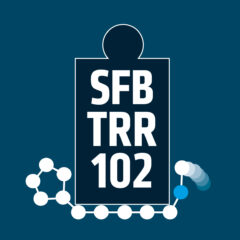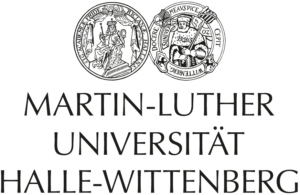Martin Kordts on “Triangulating protein-liposome interactions with EPR spectroscopy”
Location: Martin-Luther-Universität Halle-Wittenberg Theodor-Lieser-Straße 9, SR 1.03 (the lecture hall building),
06120 Halle (Saale) Time: 3.20pm - 5.00pm Link to OpenStreetMap
Abstracts
Triangulating protein-liposome interactions with EPR spectroscopy
by Martin Kordts
Hydrophobins are highly surface active fungal proteins of low molecular mass (<20 kDa) that self-assemble at interfaces. Based on hydropathy plots, solubility and superstructure morphology they are divided into two classes: class I (flexible monomers that fibrillate) and class II (compact momomers forming highly ordered membranes)[1, 2]. One of their presumed roles during the fungal life cycle is their involvement in the infection of a host organism by masking pathogenic compounds in order to suppress immune response and facilitate contact between the fungus and the host. [3, 4] We studied the interaction of class I hydrophobin SC3 from S. commune and class II hydrophobin HFB2 from T. reesei with simple liposomes as a model for cell membranes applying continuous wave electron paramagnetic resonance (cwEPR) spectroscopy. A “triangulation approach“ was taken by introducing the necessary paramagnetic species as either (1) a guest molecule (16-doxyl stearic acid; 16-DSA) within the liposome, (2) part of the lipid bilayer, or (3) covalently attached to HFB2.
Choosing the gaugeable component of a complex system in such a way allows for a detailed view of the underlying mechanics on a molecular level at low cost and with high precision.
References
[1] Linder, M.B., Hydrophobins: Proteins that self assemble at interfaces. Current Opinion in Colloid & Interface Science, 2009. 14(5): p. 356-363.
[2] Bayry, J., et al., Hydrophobins–unique fungal proteins. PLoS pathogens, 2012. 8(5): p. e1002700-e1002700.
[3] Aimanianda, V., et al., Surface hydrophobin prevents immune recognition of airborne fungal spores. Nature, 2009. 460(7259): p. 1117-21.
[4] Wösten, H.A.B., Hydrophobins: Multipurpose Proteins. Annual Review of Microbiology, 2001. 55(1): p. 625-646.





One thought on “Doctoral students seminar (November 26, 2019)”